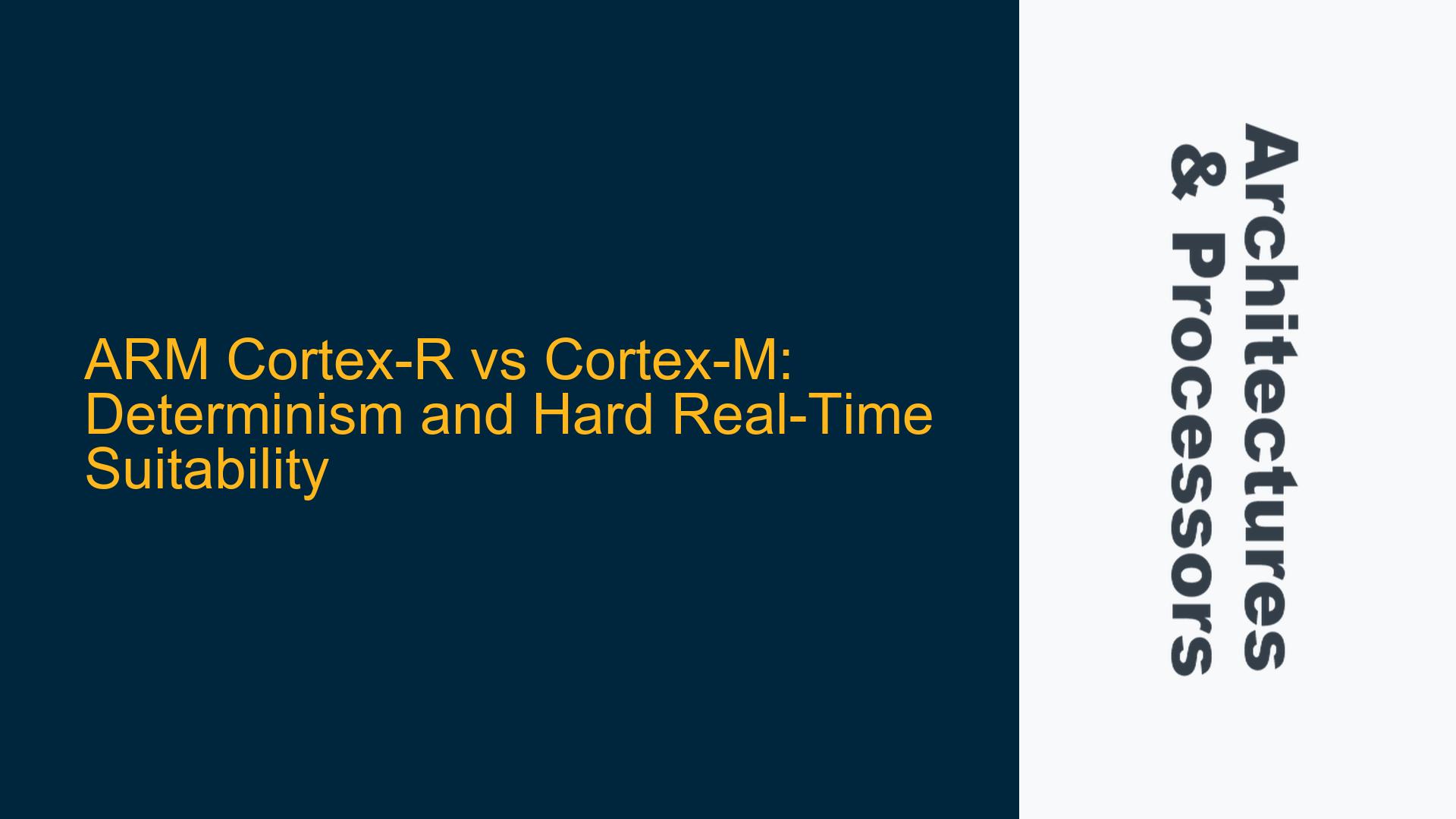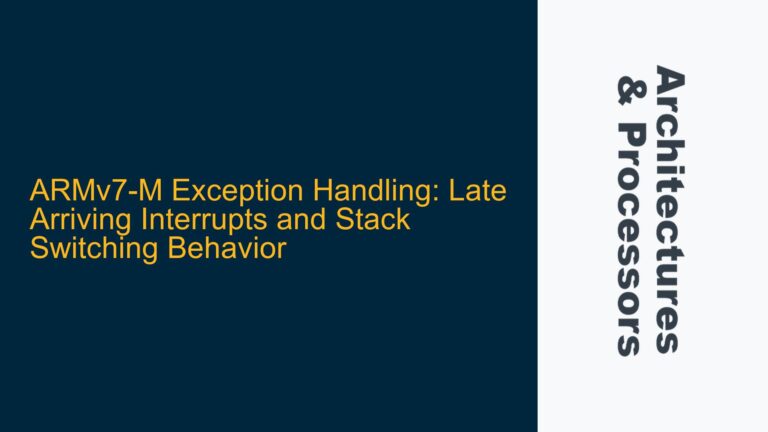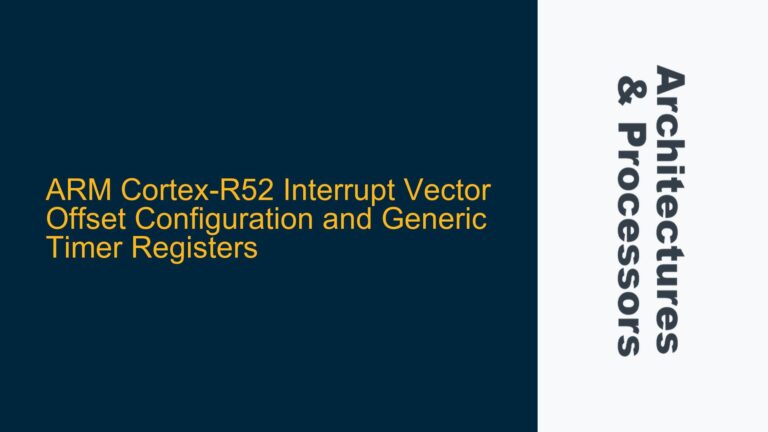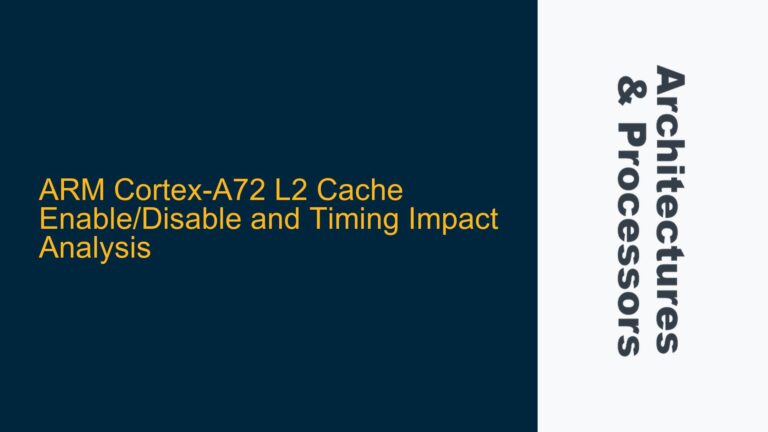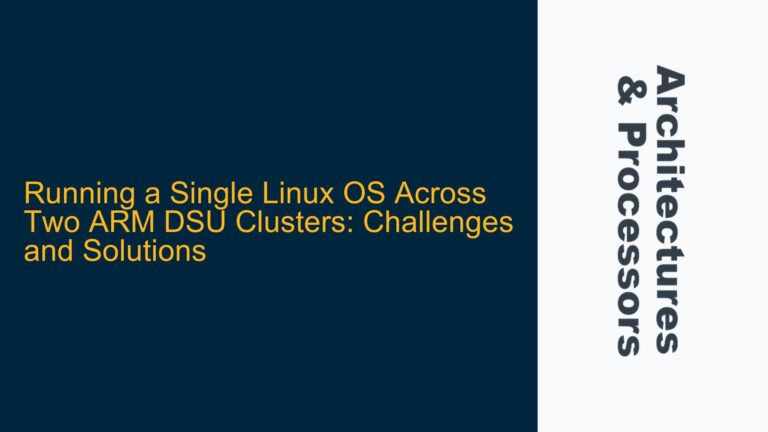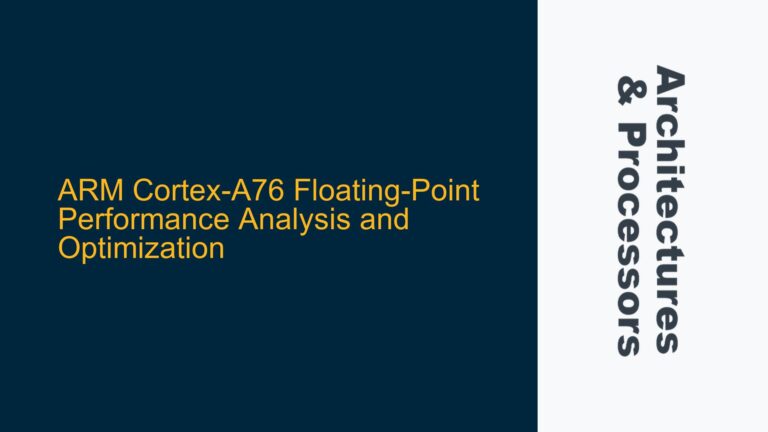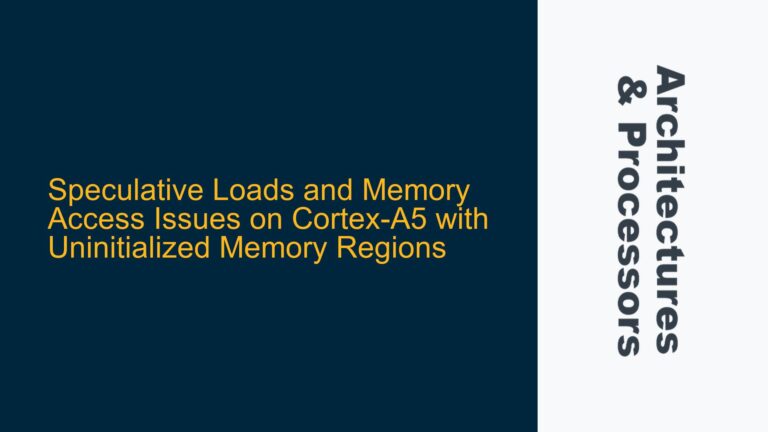Cortex-R vs Cortex-M: Interrupt Latency and Pipeline Depth Trade-offs
The Cortex-R and Cortex-M families are both designed for real-time applications, but they cater to different segments of the real-time spectrum. The Cortex-R series is optimized for hard real-time systems, where determinism and reliability are paramount, while the Cortex-M series is tailored for cost-sensitive, low-power, and moderate real-time requirements. One of the key differences lies in their interrupt handling mechanisms and pipeline architectures, which directly impact their suitability for hard real-time tasks.
The Cortex-R5, for instance, exhibits a higher interrupt latency (around 20 cycles) compared to the Cortex-M7 (around 12 cycles). This difference arises from the Cortex-R5’s deeper pipeline and the absence of mechanisms like tail-chaining and late arrival handling of interrupts, which are present in the Cortex-M7. Tail-chaining allows the Cortex-M7 to handle back-to-back interrupts more efficiently by reducing the overhead of stacking and unstacking registers. Late arrival handling ensures that higher-priority interrupts are serviced immediately, even if a lower-priority interrupt is already being processed.
The deeper pipeline in the Cortex-R5, while contributing to higher interrupt latency, enables higher clock speeds and better overall performance. This trade-off is acceptable in hard real-time systems where the primary concern is not just low latency but also the ability to handle complex tasks with high reliability and determinism. The Cortex-R5’s pipeline is designed to maximize throughput and ensure that critical tasks are completed within their deadlines, even if it means sacrificing some interrupt responsiveness.
In contrast, the Cortex-M7’s shorter pipeline and advanced interrupt handling mechanisms make it more suitable for applications where low interrupt latency is critical, but the complexity of tasks is relatively lower. The Cortex-M7’s design prioritizes quick response times over raw computational power, making it ideal for applications like motor control, where rapid reaction to external events is essential.
Functional Safety Features and Memory Architecture in Cortex-R
The Cortex-R series distinguishes itself from the Cortex-M series through its robust functional safety features and advanced memory architecture. These features are critical for applications in industries like automotive, aerospace, and industrial automation, where system failures can have catastrophic consequences.
One of the standout features of the Cortex-R series is its support for lockstep cores. Lockstep cores operate in parallel, executing the same instructions simultaneously and comparing their outputs to detect and correct errors in real-time. This redundancy is crucial for achieving the high levels of reliability required in safety-critical systems. The Cortex-M series, while capable of supporting some safety features, does not natively offer lockstep core functionality.
Another significant difference is the inclusion of Error Correction Code (ECC) memory support in the Cortex-R series. ECC memory can detect and correct single-bit errors, preventing data corruption and ensuring the integrity of critical data. This feature is particularly important in environments where radiation or electrical noise can cause memory errors. The Cortex-M series typically lacks ECC support, making it less suitable for applications where data integrity is paramount.
The Cortex-R series also features Tightly Coupled Memory (TCM), which provides fast and deterministic access to critical data and instructions. TCM is separate from the main cache and is directly accessible by the CPU, ensuring low-latency access and predictable execution times. While some Cortex-M processors offer optional TCM, it is a standard feature in the Cortex-R series, further enhancing its suitability for hard real-time applications.
Additionally, the Cortex-R series includes a Memory Protection Unit (MPU) that is more advanced than the one found in the Cortex-M series. The MPU in the Cortex-R series supports more regions and provides finer-grained control over memory access permissions, enabling more robust isolation of critical tasks and data. This is essential for ensuring that faults in one part of the system do not propagate and cause failures in other parts.
Implementing Determinism in Cortex-R: Cache Management and Dual-Issue Execution
To achieve the high levels of determinism required in hard real-time systems, the Cortex-R series employs several architectural features that are either absent or less advanced in the Cortex-M series. These features include sophisticated cache management, dual-issue execution, and advanced branch prediction.
Cache management in the Cortex-R series is designed to minimize unpredictability in execution times. The Cortex-R5, for example, includes both data and instruction caches, which can be configured to operate in a way that ensures deterministic access times. The cache can be locked down to retain critical code and data, preventing eviction and ensuring that they are always available in the cache. This is particularly important in hard real-time systems where cache misses can lead to unpredictable delays.
The Cortex-R series also supports dual-issue execution, allowing the processor to execute two instructions simultaneously under certain conditions. This increases throughput and ensures that critical tasks are completed within their deadlines. Dual-issue execution is particularly beneficial in applications with high computational demands, such as signal processing and control algorithms.
Advanced branch prediction is another feature that enhances the determinism of the Cortex-R series. The branch predictor in the Cortex-R5 is designed to minimize the penalty associated with branch mispredictions, ensuring that the pipeline remains full and that execution times are predictable. This is crucial in hard real-time systems where even small variations in execution time can lead to missed deadlines.
In contrast, the Cortex-M series, while capable of handling real-time tasks, lacks some of these advanced features. The Cortex-M7, for example, does not support dual-issue execution and has a simpler branch predictor. These limitations make the Cortex-M7 less suitable for applications where high levels of determinism and computational power are required.
In conclusion, the Cortex-R series is better suited for hard real-time systems due to its advanced functional safety features, robust memory architecture, and sophisticated cache management. While the Cortex-M series offers lower interrupt latency and is more cost-effective, it lacks the determinism and reliability required for safety-critical applications. The choice between Cortex-R and Cortex-M ultimately depends on the specific requirements of the application, with the Cortex-R series being the preferred choice for hard real-time systems where reliability and determinism are paramount.
